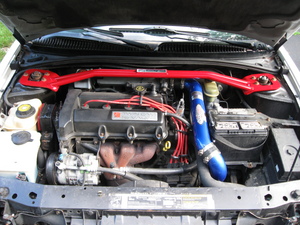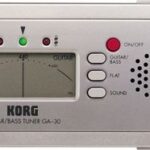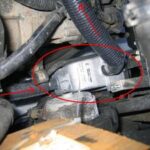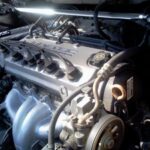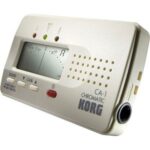Air intakes are nothing new to the automobile enthusiast. They are usually found under the hoods of tuner cars across the country, and are easily recognizable as the fat pipe under the hood that has been painted a ridiculous color, like Afterburner Orange or Nitrous-Blast Blue. At the end of these pipes is a cone filter, which looks nothing like the stock filter element in the factory air box that cars come with. But, does this piece of engine-bay eye-candy really make the car go faster? Well, if the intake has been engineered properly, there’s a good chance of it.
Product: AEM Cold Air Intake
The air intake I bought for my car is made by AEM. AEM is a performance engineering company for cars, and air intakes are their specialty. They offer both short ram and cold air intakes. Both types of intakes are basically just polished piping with a high-flow cone filter at the end. With either intake, there are fewer restrictions to airflow when compared to a car’s factory air box. The greatest advantage comes from the cone filter, which can suck in air in a 360-degree sweep, and the lack of sharp bends in the piping system. With cold air intakes, the filter is located outside the engine bay (either in the fender well or behind the bumper), which allows colder air to be drawn into the engine. Colder air is more dense, so a cold air intake effectively packs more air into the engine’s cylinders.
Appearance:
The AEM cold air intake is made of aluminum, which has been coated in a shiny blue color (other colors are available). As you can see in this article’s picture, the brilliant blue tube looks out of place in my 98 Saturn SL2’s engine bay. I think it looks kind of cool, but then again, I don’t have to worry about people’s remarks during everyday driving, because I tend to drive my car with the hood securely latched in the downward position.
Installation:
Installing this took about 2 hours with a friend’s help. The only tools required were screwdrivers and socket wrenches. The first step was to remove the car’s factory air box and tube assembly. Then, following AEM’s vehicle-specific instructions (very handy pictures were included), we proceeded to install the intake. This involved jacking up the car and taking the front driver’s wheel off, after which we cut a hole in the fender liner to route the intake tube. Bolting everything up and adjusting for fit took about a half hour once the hole was made in the plastic fender liner.
Fit:
The AEM intake was precision-bent from the factory to fit the car’s engine bay. Still, since an SL2 is a tiny car, there isn’t much room under the hood. As you can see from this article’s picture, the tube comes pretty close to the battery, so I put in a piece of mountain bike carbon bash guard tape to protect against rubbing. I get the feeling that AEM designed the intake pipe diameter to be as large as possible (maximizing airflow), even though this makes the fit inside the engine bay quite snug. Also, the lower part of the intake can knock against the car’s clutch master cylinder if the soft mount on the battery tray isn’t adjusted properly. Although the situation will be different for every car, if installed correctly, with adequate time spent on adjustments, most contact and rubbing issues can be avoided.
Function:
The first thing I noticed after I started my car was how loud it was. The factory air box was designed to offer some engine noise reduction. Now, with a large tube leading directly into my car’s intake manifold, my once-polite SL2 roars with the best of them when I put the pedal down. Still, the car is only loud when accelerating…the noise increase is hardly noticeable during cruising.
When you drive normally, gas mileage seems unaffected. However, it is very easy to drive overenthusiastically with this thing installed. I suppose constantly romping on my poor car to hear the intake scream doesn’t help my wallet. The cone filter at the end of the intake tube is washable (AEM sells the kit for this), so if you don’t want to fill up landfills, this intake is a good choice. The recommended filter-washing interval is 30,000 miles, sooner if you live in dusty conditions. Obviously, you can just wait to wash the filter until it looks like a piece of lint on a stick, but by that time any advantage of having a performance intake will be long gone.
As for the horsepower increase, I don’t have any dyno sheets or cold facts, but the car does feel quicker. Keep in mind that an SL2 only weighs 2400 pounds, so even a small power boost will be felt. My gut feel is that the car is probably making an extra 5-6 horsepower in the mid-to-upper RPMs, which is where airflow restrictions from a factory air box could choke a car.
Bottom Line:
At $250, an AEM Cold Air Intake might provide you with a few more ponies. It was a fun project installing, and now I can say that I have customized my car. Although it won’t make your car eligible to set the pace for NASCAR, it might give you a tiny edge over a stock vehicle. And, if you like loud cars that don’t sound like weed whackers, this intake is just the thing to let your car express itself.
